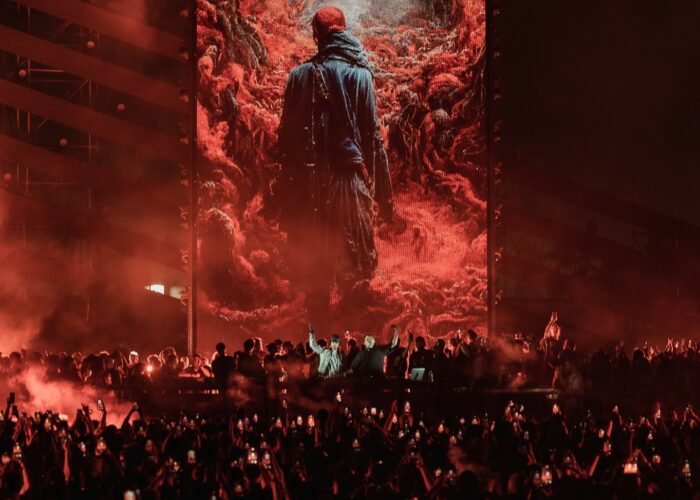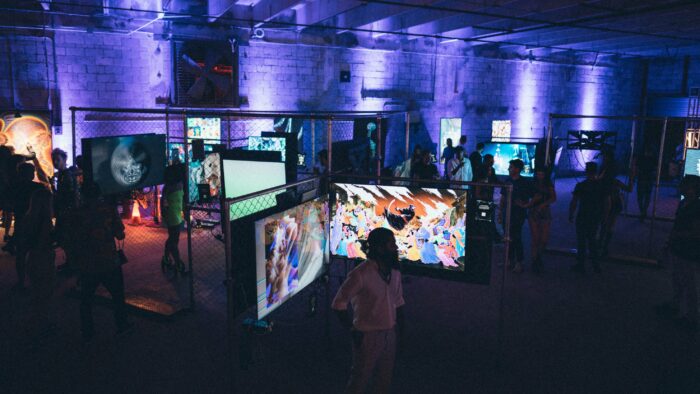How enigmatic artist Trippy is leading the fight for better Web3 events
NFT events are broken. This fact should not be news to anyone in Web3. While the large community of creators and developers has flourished in curating offshoot activations around NFT.NYC and the like, the conferences and conventions themselves continue to fall short.
Of course there are exceptions. When the NFT community itself is the planner of such NFT conventions (like VeeCon, The Gateway, etc.), Web3 rejoices. Perhaps this is because those in Web3 know what their peers want to see, feel and experience. In contrast, many popular NFT conventions appear to be a predatory echo of Web2 in Web3 clothing.
So why do we continue to populate these conventional conferences and use them as a home base? Why doesn’t the NFT space go its own way? This is the attitude of many in society, perhaps most notably, the enigmatic artist known as Trippy. Through Trippy Labs, a multidisciplinary Web3 creative studio, the anonymous creator aims to make Web3 events more, well, Web3. How? By producing experiences that are made of and to The NFT square.
Beyond Basel
During the 2022 iteration of Art Basel Miami Beach, the who’s who of Web3 gathered at the tip of The Sunshine State to celebrate the achievements of the past year and look toward a decentralized future. While nft now x Mana Commons The Gateway sought to welcome the blockchain community to its five-day Web3 metropolis, on the other side of town, Trippy Labs curated a different vibe with Beyond Basel.
“With the state of the market, everything going on with FTX, and everyone questioning the state of NFTs and crypto in general, it was so important for us to do this event,” Trippy said in an interview with nft now. “I feel like [nft now] really crushed it during the day, then as soon as [The Gateway] turn off, we booted up.”
Spanning seven acres and featuring two outdoor stages and a 14,000 square meter gallery, Beyond Basel set out to be the definitive Web3 festival. Packed with innovative visual art exhibits, gaming events coordinated by FaZe Clan, an interactive live voice-to-picture AI booth, performances from influential electronic artists and more, Beyond undoubtedly set the bar for what a dusk-to-dawn web3 experience could (and might should be.

While the immersive art installations, cocktails, live music, and abundance of lasers screamed “party,” by the time the three-day event was complete, it became even more apparent how important IRL Web3 experiences are to blockchain culture. If the true utility of NFT events is the benefit of face-to-face connectivity, the Web3 community must be their architects to have robust and successful IRL experiences.
“[At NFT events] I meet people from the last year or two that I may have spent time with at the Clubhouse or Twitter Spaces during the first wave of NFTs. But then I also mix with a lot of artists from the last decade that I might have shared pieces of on Instagram or done a creative project with and just never met in real life,” said Trippy. “I think that’s one of the underlying goals of events like Beyond Basel — to try to weave together so many different creatives and technologists and interesting minds.”
NFT events, created by Web3 community
Contrary to popular belief (or the actions of bad actors), NFT events exist not to be wasted speculating about which coins will trigger next, but for blockchain-based communities to meet and network in real life . This is precisely why Beyond Basel was marketed broadly as a networking event and celebration of the arts rather than a party with star-studded headliners. In addition to shaping public perception so that NFT events can be promoted to their full potential, Trippy says the success of these activations comes down to having skin in the game.
“A lot of the success around events stems from longevity in the NFT space, which keeps popping up in that scene, and trust,” Trippy said. “I did the same event last year at the same venue with many of the same partners with not as big a roster, but many of the same artists as well. So [event success] was sort of a continuation of both Trippy as a brand that was developed on social media for almost a decade and Trippy Labs as a collective specifically emerging in the NFT space in the last couple of years.”

While an enduring presence is undoubtedly helpful in getting NFT events off the ground, a pattern emerges when we look at the successes and failures of these events over the past few years. And there is a pattern that depicts NFT events created and run by those in the NFT community as the most successful, accessible and enjoyable. On the other hand, NFT arrangements created by unaffiliated companies or organizations are shockingly expensive, confusing and sometimes just simply ridiculous.
“Every time one of these conferences comes around, people realize more and more that these events should be giving money directly back to the NFT community,” Trippy said. “If someone did a record of things that take money out of the community, and people saw how much money some of these conferences brought in, I think they really wouldn’t be happy to support them.”
To reiterate: the fact that major NFT events are broken should not be news to the Web3 community. But when it comes to what can be done about them taking time (and money) out of the ecosystem, according to Trippy, it’s really a matter of community action. “That model definitely needs to change. If a bunch of us can coordinate more on events, like, ‘Oh, here’s some of us who’ve been throwing events around the conferences. Can we all come together and kind of change the calendar in the years that coming?’ I think it will happen when time permits.”


